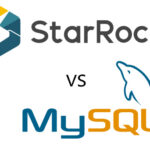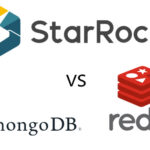Both MongoDB and Redis are popular NoSQL databases, but they serve different purposes and have distinct architectures. Understanding the strengths and weaknesses of each can help you choose the right tool for specific use cases. In this article, we’ll dive into the pros and cons of MongoDB and Redis, compare their performance, and highlight suitable application models for each.
MongoDB Overview
MongoDB is a document-oriented NoSQL database designed to handle large volumes of data with flexibility. It stores data in BSON (Binary JSON) format, which allows it to manage complex, hierarchical structures efficiently.
Pros of MongoDB:
- Schema Flexibility: MongoDB offers a flexible schema, making it ideal for applications where the structure of data might evolve over time. This flexibility allows developers to store different types of data without strict schema enforcement.
- Scalability: MongoDB supports horizontal scaling through sharding, making it suitable for large-scale, distributed applications. As data grows, MongoDB can scale out across multiple nodes.
- Rich Query Capabilities: MongoDB offers powerful query features, including support for ad-hoc queries, aggregation frameworks, geospatial queries, and full-text search.
- High Availability: With its built-in replication and failover mechanisms, MongoDB ensures high availability of data through replica sets, automatically maintaining copies of data across multiple servers.
Cons of MongoDB:
- Consistency Trade-offs: By default, MongoDB follows an “eventual consistency” model, which can lead to stale reads if replicas are out of sync. This may not be suitable for all applications that require strict data consistency.
- Higher Latency for Reads: Due to its complex querying capabilities and document-based storage, MongoDB can exhibit higher read latency compared to key-value stores like Redis.
- Memory Consumption: MongoDB tends to use more memory because it maintains indexes and data in memory for faster querying, which can be resource-intensive for large datasets.
MongoDB Use Cases:
- Content Management Systems (CMS): MongoDB’s flexible schema makes it suitable for managing dynamic content structures like blogs, e-commerce catalogs, and social networks.
- Real-time Analytics: MongoDB is often used in applications that require real-time analysis of large volumes of data, such as IoT data streams or event-based applications.
- Mobile App Backends: MongoDB’s support for JSON-like document storage makes it a good fit for mobile applications that rely on complex, hierarchical data structures.
Redis Overview
Redis (Remote Dictionary Server) is an in-memory data structure store that supports key-value pairs and offers extremely low-latency data access. Redis is optimized for speed and often used as a cache or session store, although it has been expanding into more persistent storage roles.
Pros of Redis:
- High Performance: Redis operates in-memory, making it incredibly fast for read and write operations. Its sub-millisecond response times are ideal for high-performance applications.
- Data Structures: Redis supports various data structures, including strings, lists, sets, sorted sets, hashes, bitmaps, and more, giving developers flexibility in handling data.
- Persistence Options: Redis offers both in-memory caching and the ability to persist data to disk, giving it the dual role of being a fast cache and a durable data store.
- Atomic Operations: Redis supports atomic operations on its data types, making it well-suited for applications requiring counters, distributed locks, or rate limiting.
Cons of Redis:
- Memory Limitations: As an in-memory database, Redis is constrained by available memory. Although it supports persistence, its primary use case remains as a memory-first store, which can be costly for large datasets.
- Limited Query Capabilities: Redis operates as a key-value store, which means it lacks the complex querying capabilities of document-oriented databases like MongoDB. Data access is primarily based on keys.
- Less Suitable for Large Datasets: While Redis excels at fast access to frequently used data, its in-memory nature makes it less suitable for massive datasets unless combined with disk-based persistence strategies.
Redis Use Cases:
- Caching: Redis is widely used as a caching layer for web applications, reducing load on databases and speeding up response times by caching frequently accessed data.
- Session Management: Redis is often employed for managing user sessions in distributed systems due to its speed and ability to store ephemeral data.
- Real-time Analytics: Redis is ideal for real-time analytics tasks that require instant access to data, such as leaderboards, real-time data streams, or recommendation engines.
Performance Comparison
- Data Access Speed:
Redis is significantly faster than MongoDB in terms of raw data access speed, especially for simple key-value operations. Redis operates entirely in memory, leading to sub-millisecond latencies. MongoDB, on the other hand, reads from disk and memory, which introduces higher latency, particularly for complex queries. - Scalability:
MongoDB offers more robust horizontal scaling mechanisms through sharding, making it better suited for applications with large, distributed datasets. Redis scales vertically (adding more RAM), but scaling out Redis requires more sophisticated architecture, such as clustering, which can increase complexity. - Write Performance:
Redis excels at high write-throughput due to its in-memory nature and its support for atomic operations. MongoDB’s write performance is typically slower due to the need to persist data and manage document structures. - Data Consistency:
Redis offers strong consistency for operations on individual keys, but lacks built-in ACID compliance for multi-key operations. MongoDB provides eventual consistency in its default configuration but can be tuned for stronger consistency at the cost of performance.
MongoDB vs. Redis: Choosing the Right Tool
- MongoDB is ideal for applications that require complex querying, flexible data models, and large-scale distributed systems. It is well-suited for scenarios where the data structure evolves over time, or when applications need powerful indexing and querying features.
- Redis is best suited for applications that demand extreme speed, such as caching, real-time analytics, or session management. Redis shines in scenarios where data access patterns are simple and low-latency operations are critical.







Leave a Reply